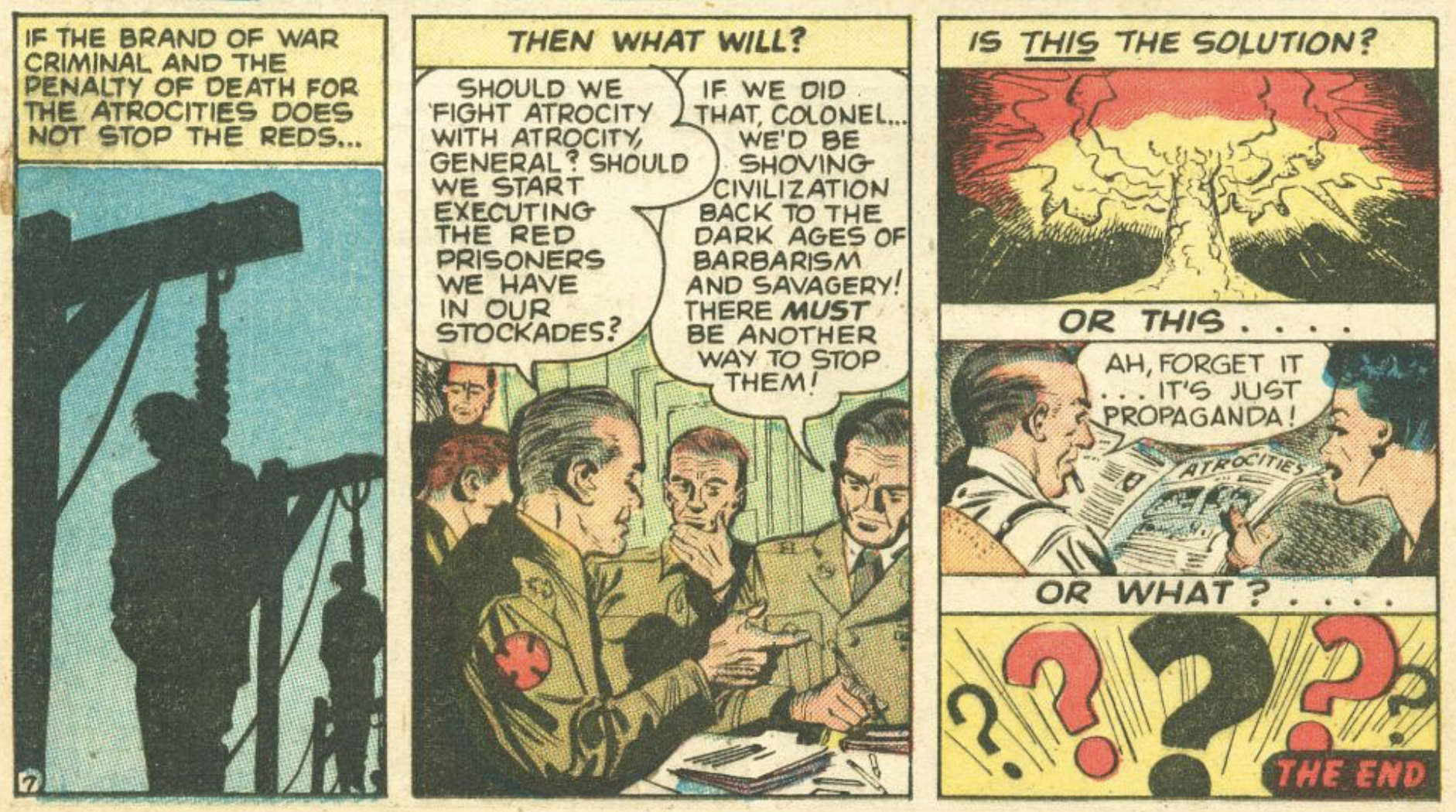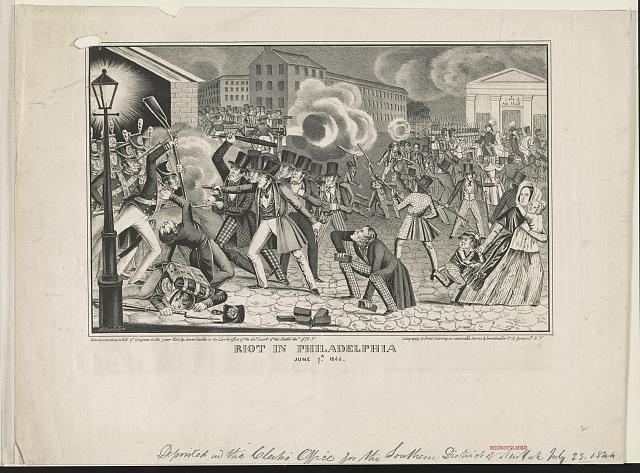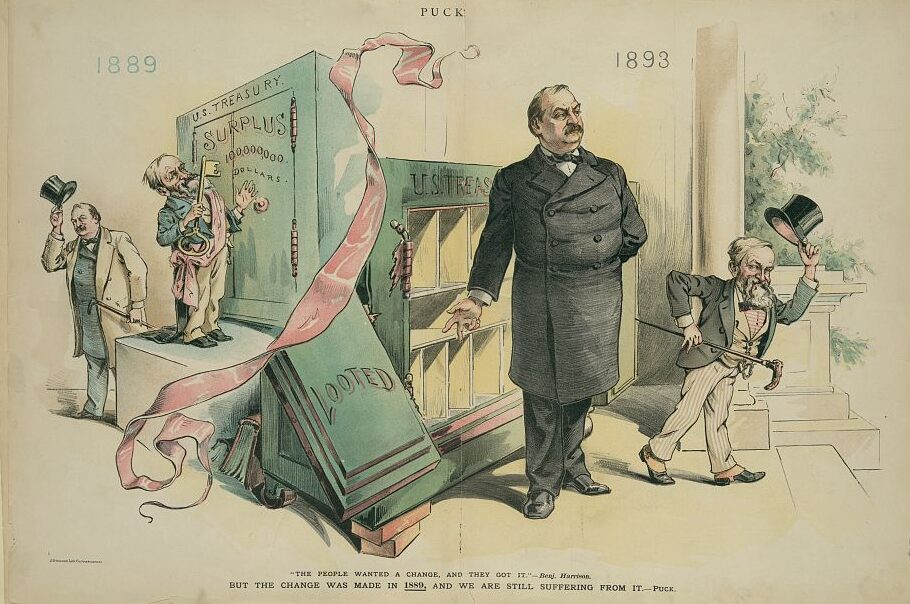On Easter Monday morning, April 24, 1916, about 1,600 Irish republicans seized control of a number of buildings in Dublin. Their headquarters was the General Post Office (GPO) on O’Connell Street where, close to midday, Patrick Pearse, one of the leaders of the rebellion, read the Proclamation of the Irish Republic. This marked the beginning of an insurrection against British control of Ireland.
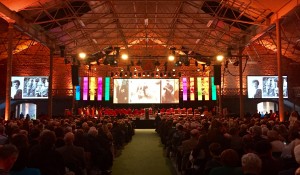
Relatives’ Event during the 2016 Easter Rising Commemorations. The Relatives’ Event involved a speech by President Michael D. Higgins followed by a concert detailing Ireland’s history through music and song. Image courtesy of the author
Hopelessly outnumbered, the rebels held out for six days, and on April 29, they surrendered. While the rebellion was initially unpopular with the general public, the British reaction swiftly changed that. They arrested over 3,500 people—many of whom had not been involved in the Rising. The British also secretly court-martialed 187 rebels and executed 15. It was these arrests, courts-martials, and executions that turned public opinion. As the poet W.B. Yeats wrote, “all changed, changed utterly.” The executed leaders were seen as martyrs; some who were imprisoned became leaders of a vibrant revolutionary movement, and the general election of 1918 showed overwhelming support in Ireland for those who had supported the 1916 Rising. Electoral victory was swiftly followed by the Irish War of Independence that took place between 1919 and 1921, ultimately resulting in the establishment of the Irish Free State (now the Republic of Ireland) and Northern Ireland.
The Rising in 1916 had been set for Easter weekend, partly because of its religious significance, but also because the holiday weekend meant many British troops usually stationed in Dublin would be away from their barracks. Previous commemorations of the Rising have always been marked according to the religious holiday rather than the actual date. Keeping with this tradition, the Republic of Ireland commemorated the centenary of the Easter Rising not on April 24, 2016, but on Easter weekend, March 26–28.

The centenary has generated massive interest in the 1916 Easter Rising. Souvenir shops stock everything from commemorative fridge magnets and jigsaws to mugs, hip flasks, and candles. Image courtesy of the author
I have both a professional and personal interest in the commemoration of the Easter Rising. Professionally, I’ve been the consultant historian for museum and heritage projects connected to the 1916 Rising, and I teach a module on Ireland and commemoration at Liverpool John Moores University. On a personal note, my great-grandfather, Jack O’Brien, fought in the Rising as a member of the Irish Volunteers in County Wexford, one of the few centers of rebellion outside the capital city.
The Irish government’s plans for the centenary commemoration were initially beset by controversy. A short film, Ireland Inspires, was launched in November 2014 to mark the announcement of the government’s commemorative program. Despite its clear connection to the centenary, the film—a corporate production focusing on Ireland as a great place to holiday and do business—failed to make any mention of the Rising. It was dismissed by Professor Diarmaid Ferriter (University Coll. Dublin), a leading historian and member of the government advisory panel, as “embarrassing” and “unhistorical.” Individuals in the Irish government also misguidedly suggested that members of the British Royal Family be invited to the official commemoration. Given that the Rising was about breaking the connection with Britain and the Royal Family, this suggestion was generally derided in the press. A few other missteps included the unveiling of a huge banner in the city center that appeared to link the Easter Rising with constitutional nationalists—some of whom had actively opposed the rebellion.
Because of my great-grandfather’s participation in the Rising, I was invited to the Relatives’ Event and also to the Easter Sunday commemoration ceremony and parade on O’Connell Street. The Relatives’ Event was to involve a speech by President Michael D. Higgins followed by a concert detailing Ireland’s history through music and song. I found it odd for relatives of the participants in Easter Rising of 1916 to receive special treatment at the centenary commemorations. I’m very proud of my great-grandfather’s part in the Rising but I can claim neither credit nor blame for any of his actions.
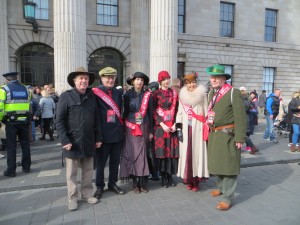
Over 750,000 people wandered the city of Dublin during “Reflecting the Rising,” a festival of public events commemorating the Easter Rising. Visitors were guided to venues by volunteers dressed in period costume. Image courtesy of the author
As a child in the 1980s I grew up less than an hour from the border that divides the Republic of Ireland from Northern Ireland. I knew nothing of my great-grandfather’s participation in the rebellion, however, and the 1916 Rising was never discussed. During my childhood, militant republicans had claimed sole ownership of the legacy of the Easter Rising. As a result, official celebrations tended to be low key and the Rising was often commemorated more by paramilitary organizations that held rival parades and ceremonies than the Irish government. Indeed, for a time the government suspended the usual state military commemoration, fearing that it would in some way imply approval of the IRA’s military campaign.
Despite my reservations, I attended several of the events. I was curious to see first-hand how the state commemorated the Rising. Would political parties engage in a point-scoring exercise? Would there be an attempt to rewrite the Easter Rising as a military success? None of those things happened. The public outcry that followed the official launch of the commemorative program led to a change in focus. John Concannon, the newly appointed director of the government’s 2016 program, refocused the centenary plans to reflect a more complex, sensitive series of events. The new slogan was “remember, reflect, reimagine.” The events I attended were dignified, inclusive, and nonpartisan. There were speeches, solemn wreath-laying ceremonies, and a military march past the GPO. Higgins talked about the great diversity of backgrounds and aspirations of those who took part and charged the Irish today “to take on our own responsibilities in imagining and building a Republic in the fullest sense, institutional and experiential, one of which our founders would be proud; truly representative of a nation rooted in courage, vision and a profound spirit of generous humanity.”
Away from the official ceremonies the centenary has generated massive interest. Bookstores’ shelves groan with the weight of books about the Rising, souvenir shops stock everything from commemorative fridge magnets and jigsaws to mugs, hip flasks, and candles. Easter Monday saw Dublin city center taken over by “Reflecting the Rising”—a multi-venue festival of public events including talks, recitals, and musical and theatrical performances. Over 750,000 people wandered the city guided to venues by volunteers dressed in period costume. The huge range of lectures and talks didn’t shy away from the complexity of the Rising. The story of the Easter Rising has long been dominated by the leaders of rebellion. That is no longer the case. A much more nuanced, multi-layered history is now available. For the first time this Easter weekend it felt as if the Easter Rising had been re-claimed by the majority of the people.
Professor Anne Dolan (Trinity Coll. Dublin) recently asked, “When has commemoration ever truly been about history?” Commemoration often reveals much more about the present than it does about the past. It forces us to consider where we are at a particular moment. Previous governments had been fearful of commemorating the Easter Rising because they might be seen as approving the use of violence. There was a value judgement—the violence during Easter 1916 was justified and legitimate whereas the violence during the “Troubles” was regarded as terrorism. In 2016 there is time to reflect on the Ireland that had been fought for a century ago. Today’s Ireland is a more peaceful, but still divided island. It’s also an Ireland beset by all sorts of problems including homelessness, poverty, and high unemployment. The introspection brought on by the commemoration of a significant event often reflects an image we don’t want to see. But if the language of inclusion, if the discussion of a complex, conflicted, and divided past leads us to take steps to a more positive future, then looking back to the beginning of the foundation of the state can be a very good thing indeed.
This post first appeared on AHA Today.
Gillian O’Brien is reader in modern Irish history in the history department at Liverpool John Moores University. She is the author of Blood Runs Green: The Murder that Transfixed Gilded Age Chicago (2015). She can be found on Twitter @gillianmobrien.
This work is licensed under a Creative Commons Attribution-NonCommercial-NoDerivatives 4.0 International License. Attribution must provide author name, article title, Perspectives on History, date of publication, and a link to this page. This license applies only to the article, not to text or images used here by permission.
